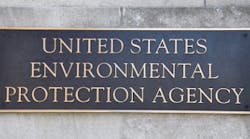How to make sure your dental practice is EPA compliant
SPONSORED CONTENT
Dental practices are subject to strict federal (EPA), state, and local regulations to ensure the proper handling and disposal of all bio-hazardous materials. Is your dental practice in compliance?
This article originally appeared in the Principles of Practice Management e-newsletter. Subscribe to this informative twice monthly practice management ENL here.
Every day, your dental practice handles infectious, hazardous, and pharmaceutical waste materials. That’s why dental practices are subject to strict federal (EPA), state, and local regulations to ensure the proper handling and disposal of all bio-hazardous materials. From a regulatory standpoint, most dental offices meet the EPA’s Resource Conservation and Recovery Act (RCRA) requirements for proper management and disposal of hazardous and non-hazardous solid materials to reduce waste and promote beneficial reuse.
Know the facts
Generally speaking, dental offices produce relatively small amounts of infectious and hazardous waste. Requirements for disposal and record of infectious and hazardous waste depends on the location (state) of your practice. Some states have other requirements for small quantity generators, for example, obtaining an EPA identification number or complying with additional hazardous waste material storage standards.
To make sure your practice is EPA compliant, follow these three basic waste management requirements:
1. Identify all practice-generated hazardous waste material.
2. Never store great than 2,200 pounds of hazardous waste on site at any time.
3. Deliver all hazardous waste to an off-site treatment, recovery or disposal facility.
Reduce your risk
To help reduce your practice risk and uncertainty (how to manage hazardous materials), consider hiring a reputable company that specializes in the professional handling, transportation, and disposal of EPA-regulated waste. These specialized waste management companies provide (1) on-site waste containment and management, (2) regularly scheduled pickups, and (3) a record of office-produced regulated waste.
It’s also important to know the EPA RCRA regulations stipulate a comprehensive “cradle to grave” hazardous waste management system, ensuring proper handling from the point of generation through disposal. Make sure your practice meets both EPA and state requirements by going to the EPA’s online resource that provides a complete breakdown of all state regulations, requirements (i.e., permits), guidance, contact information, and helpful resources.
Mercury pollution issue
Mercury pollution is a significant global problem. It adversely affects, and remains in, the environment for a long time, plus it’s bioaccumulative, causing severe neurotoxic affects in humans. Bioaccumulation is when organisms accumulate or absorb adverse substances, such as mercury, at a faster rate than can be expelled by catabolism and excretion. Bioaccumulation has damaging effects to our food chain organisms, particularly fish and shellfish.
The EPA determined dental practices were the main source of mercury discharges into public water works systems, discharging 5.1 tons of mercury per year, with most of it subsequently released into the environment.(1) That’s why in 2014 the EPA proposed new technology-based, pre-treatment water standards under the Clean Water Act to regulate pollutant discharges into publicly owned water treatment works and sewers by all existing and new dental practices.
The EPA concluded that the easiest way to handle the removal of concentrated mercury from the public water waste stream is directly at the dental office. Based on comprehensive studies and research, the EPA proposed that dental practices install amalgam separators and implement best management practices to help control mercury discharge, plus ancillary metals found in dental amalgam, into public water systems. The EPA determined that amalgam separators are the best and most affordable option to capture mercury, plus other metals, before water is released into publicly owned water treatment works and sewers. With this new program, the EPA expected to reduce 8.8 tons of metal discharges per year, with mercury estimated to be over one-half of that total.
EPA regulation update
Effective July 14, 2017, the EPA approved a new regulation that requires existing dental practices, dental schools, and clinics that discharge waste water into a public water system to install an amalgam separator by July 14, 2020. This regulation helps protect the public water systems from amalgam discharge and waste. It also prohibits practices from using certain line cleaners that contain bleach or chlorine.
Here’s what you should know about this new EPA regulation:
1. If your practice has an existing amalgam separator, you can continue to operate it for its lifetime or 10 years, whichever comes first.
2. Existing amalgam separators must meet EPA standards set by the final rule. To find out if your separator is in compliance, visit EPA Guidelines & Standards for Dental Offices.
3. Practices must submit a one-time compliance report. At this time, the EPA has not prepared an example compliance report. See the Federal Register notice for additional information.
4. All new amalgam separators must meet EPA final rule standards.
5. The average cost of a separator is $850 with an annual operational cost of $528. Installation costs $250 on average. There could be extra costs if your practice needs additional plumbing for the separator.
The final EPA regulation takes into account most of the ADA’s recommendations for best amalgam waste management practices. To learn more about how mercury affects the public water system, public health, food products, and how you can better manage your practice mercury waste, visit these reliable and current online resources.
U.S. Environmental Protection Agency (EPA)
State Mercury Medical/Dental Waste Programs
American Dental Association (ADA)
Best Management Practices for Amalgam Waste (American Dental Association (ADA).
ADA Directory of Dental Waste Recyclers Nationwide, State and Regional Services
Center for Disease Control (CDC)
CDC Infection Control Recommendation
For the most current practice management headlines, click here.
For the most current dental headlines, click here.
Reference
(1) Dental Effluent Guidelines. (2017, February 09). https://www.epa.gov/eg/dental-effluent-guidelines. Updated July 14, 2017. Accessed July 21, 2017.

